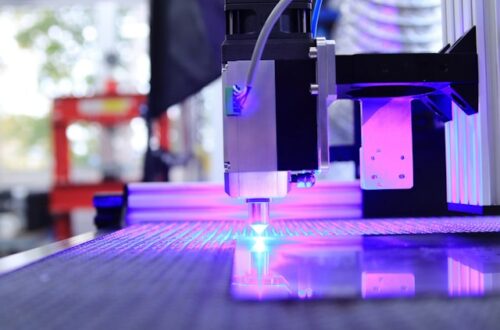
Understanding the Different Types of Hydraulic Filters and Their Application
Hydraulic systems use pressurized hydraulic fluid to power cylinders. Without proper filtration, dirt can cause hydraulic system components to wear out prematurely.
A filter is designed to force hydraulic fluid through a porous element that captures contaminants to prevent them from damaging downstream machinery. Different hydraulic filters are used to meet varying filtering needs.
Pressure Filter
A pressure filter is installed in the hydraulic system to remove contaminants from the fluid. This is done as the hydraulic fluid cycles back to the reservoir and through the return line. This allows the filter to remove any debris that may have accumulated in the system, such as metal particles from abraded machinery, air and water. Contact a reputable hydraulic filter suppliers VA, to ensure you get quality filters.
This type of filter is typically rated for the maximum amount of pressure in the system and can be found in-line to protect more sensitive hydraulic components downstream of the pump. It is important to understand that the pressure filter sees the full amount of system pressure and can be prone to damage from flow surges.
These filters are cylindrical devices with openings for inlets and outlets on opposite sides. A filter element holds the filtration media for removing contaminants and can be either a full-flow or a proportional-flow filter. Some have a bypass valve that opens for the direct flow of fluid in case the filter is clogged.
Return Line Filter
The return line filter removes the contaminants from the operating fluid as it is cycled back to the reservoir. This ensures that all new hydraulic fluid added to the system has clean oil as required by ISO 4406 contamination level regulations.
This is important because contaminant particles must be removed from critical areas of the hydraulic system to prevent particle buildup, which can cause parts to stick or create a sludge that leads to a component seizure. This type of filtration also helps to extend the service life of hydraulic pumps, valves and cylinders by keeping them free from excessive wear caused by dirty hydraulic fluid.
Return line filters are available as spin-on, in-line and tank-inside mounted versions. They are typically used in systems with no propensity for high-pressure surges and are often the only form of filtration installed on the return line between the pump and the reservoir. They are a cost-effective choice for extending the lifespan of a hydraulic system.
In-Line Filter
Modern high-pressure hydraulic systems have components built to tight tolerances and can be sensitive to contamination. Without proper filtration, contaminants promote premature wear on internal surfaces and can lead to leakage or clogs. A correctly sized and properly fitted hydraulic filter can prevent the damaging effects of contamination on much more expensive components and help keep your system running at its peak performance.
A basic hydraulic system includes a reservoir for the hydraulic fluid, a pump to move the fluid and lines (tubes, pipes or hoses) to transport the fluid to and from a hydraulic cylinder that provides linear motion. The system can actuate various devices, such as machine tools and forest harvesting equipment.
Each system component must install a filter to ensure the hydraulic fluid remains within a specified cleanliness level specification. The three most common types of filters are pressure, return line and suction.
Suction Filter
Located in the pump suction line, these filters are designed to filter fluid as it cycles back through the hydraulic system and into the reservoir. Ideally, these filters will remove any particles accumulated by the previous cycle. This ensures that the fluid in the reservoir contains only clean fluid.
The filtration process is critical to a hydraulic system’s long life. Particles can lead to sludge that causes parts to stick and, in severe cases, can cause components to seize. Filters help to eliminate these contaminants, resulting in a longer lifespan for all the hydraulic system’s components.
Most systems have multiple filters to keep the hydraulic fluid clean. The filters are installed at the right locations to ensure the liquid is always clean and safe. For this reason, properly installing and maintaining hydraulic filters is very important. It is also a great way to reduce operating costs and environmental impacts.





